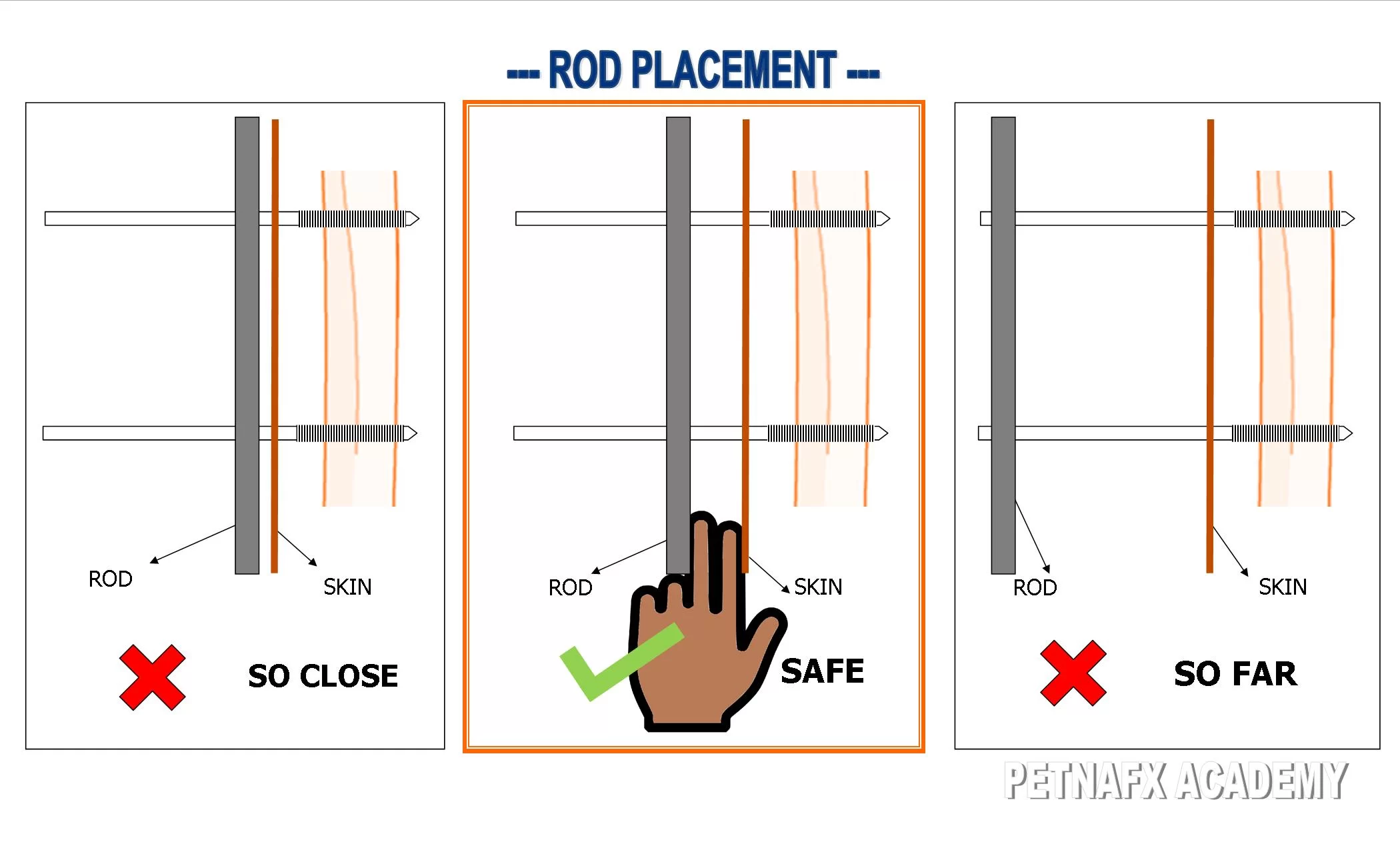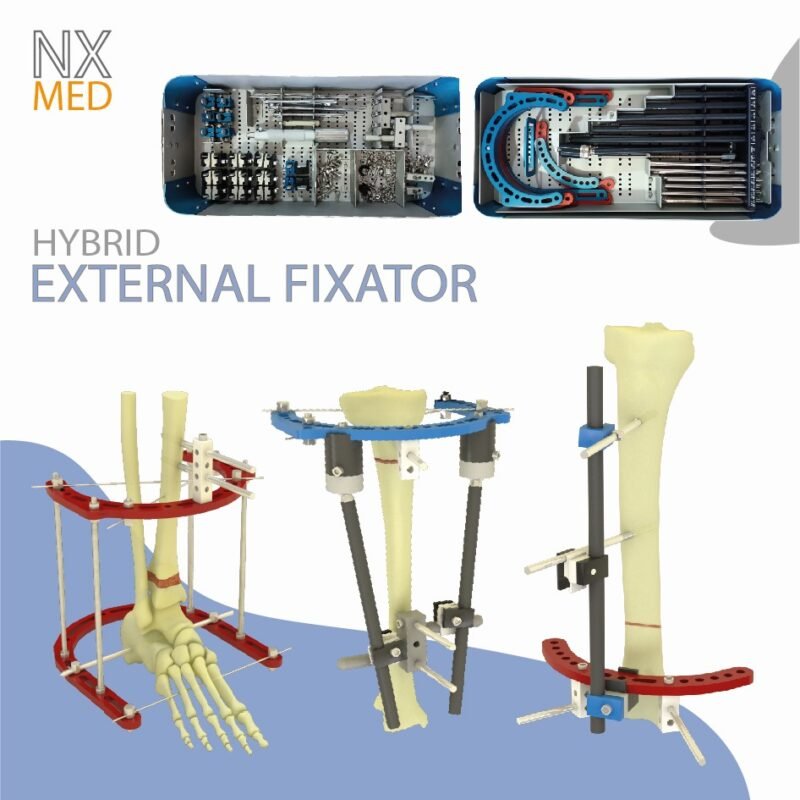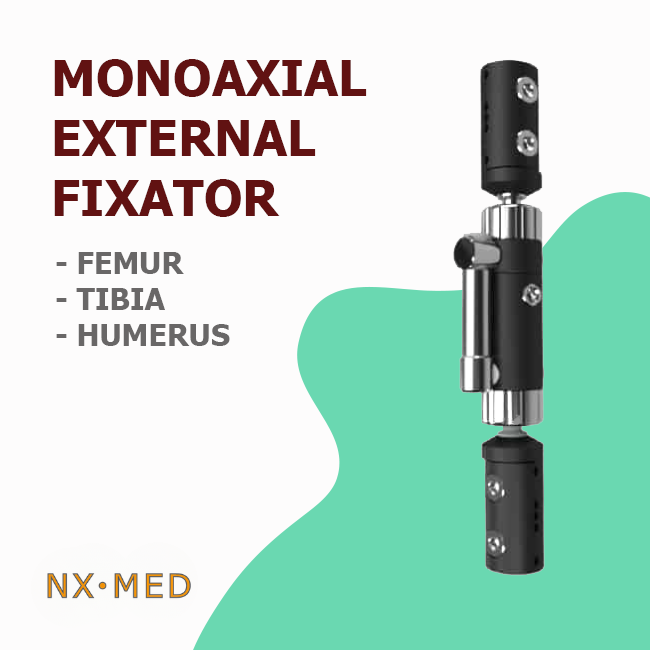Schanz Pins – Half Pin – Transfix Pin
Schanz pins are type of orthopedic pin used in external fixation to stabilize bone fractures. A metallic rod with a pointed, threaded end that allows it to be securely anchored into the bone. Schanz pins are specialized metallic rods used in orthopedic surgery for external fixation. The schanz pin have pointed threads at one end, which are designed to be inserted into bone, and the other end is fashioned to attach to an external fixation device.
PIN TYPES
There are three types of pins used in external fixation applications:
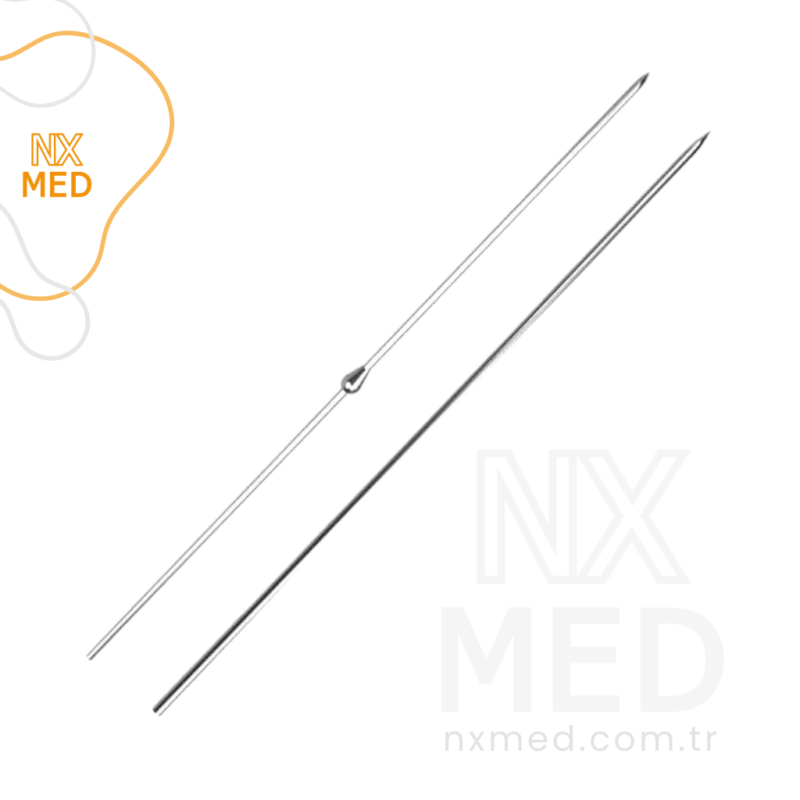
K Wire
kIRSCHNER WIRE / olıve wıre
These are straight wires with sharp, pointed ends. They are typically used for bilateral fixation. Such as: Entering from one side of the extremity and exiting from the other. Thin diameters are generally preferred and are stretched to increase strength.
The Olive K Wire has a round stop bead in the middle. And used to pull the fragment to which it is applied. It is especially useful for reducing and fixing fractures near joints.
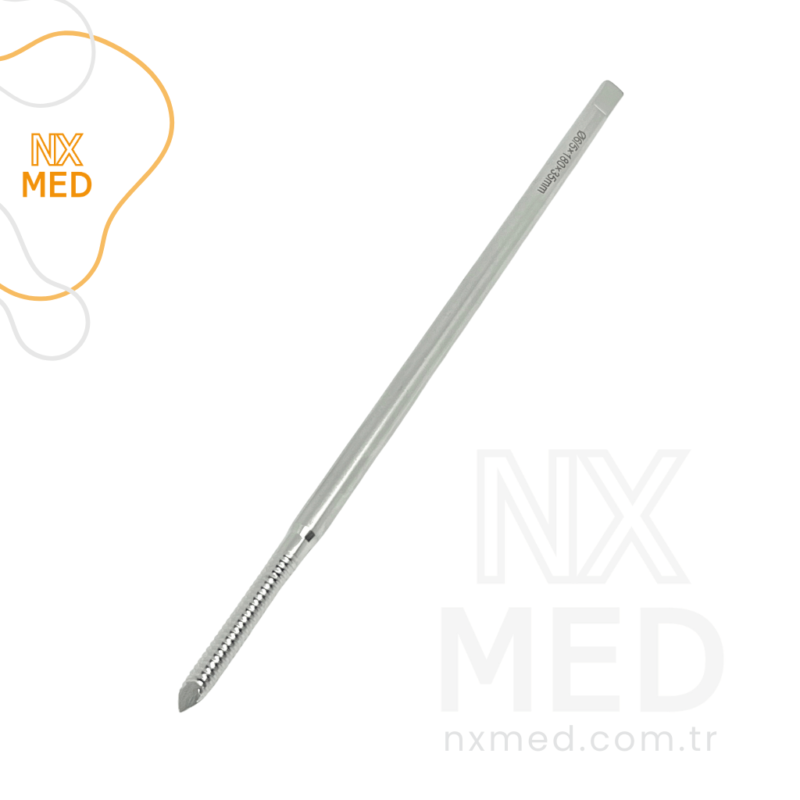
Schanz Pins
Schanz Screw / Half PIn
These are long pins with a sharp, pointed tip and a threaded section. They are placed on one side. But the threaded part must engage both cortexes of the bone. Single cortex placement is insufficient. Since these pins are not stretched, thicker diameters are preferred for adequate strength. Diameters between 20% and 25% of the bone diameter are suitable. Schanz screws thicker than 30% of the bone diameter can cause fractures and should be avoided.
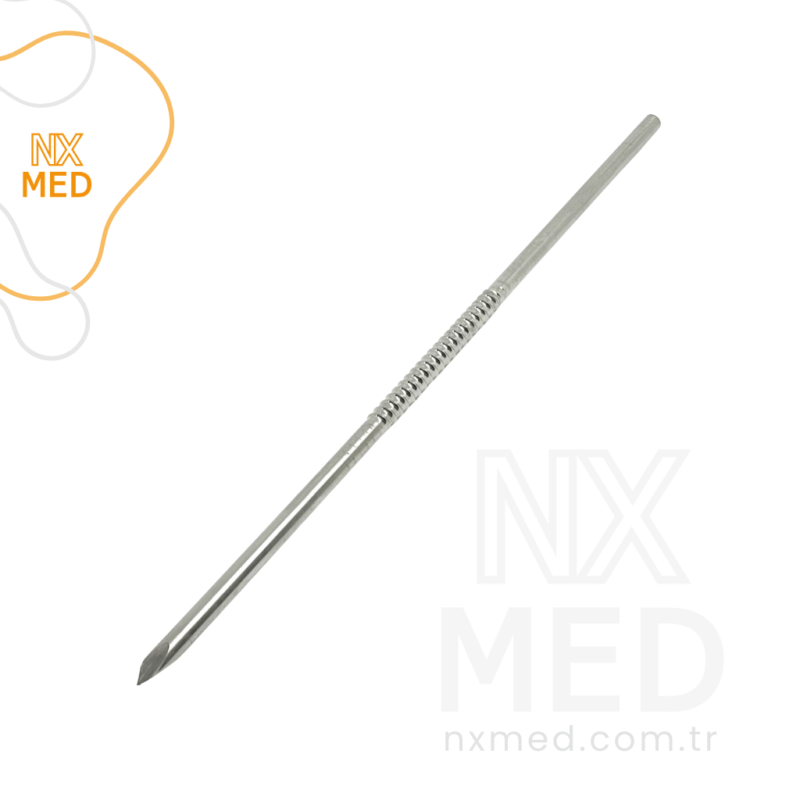
Transfix Pin
STAINLESS STEEL TransfIx PIn
These pins have a sharp, pointed tip and a threaded section in the middle. They are also used for bilateral fixation, entering from one side of the extremity and exiting from the other. Like Schanz screws, thicker diameters are preferred for sufficient bearing strength. The principles for thickness are the same as for Schanz screws. Transfix pins are mostly used in the proximal metaphysis of the tibia and calcaneus.
Pin Placement Principles:
- At least two pins must be placed in each fragment for stability. A single pin does not provide adequate stability.
- A maximum of four pins should be placed in each fragment. More than four pins do not improve fixation biomechanics.
- Proximal pins should be placed further from the fracture line, while distal pins can be slightly closer.
The approximate bone dimensions for each size of animal and the recommended schanz pin and rod diameters are presented in the table below:
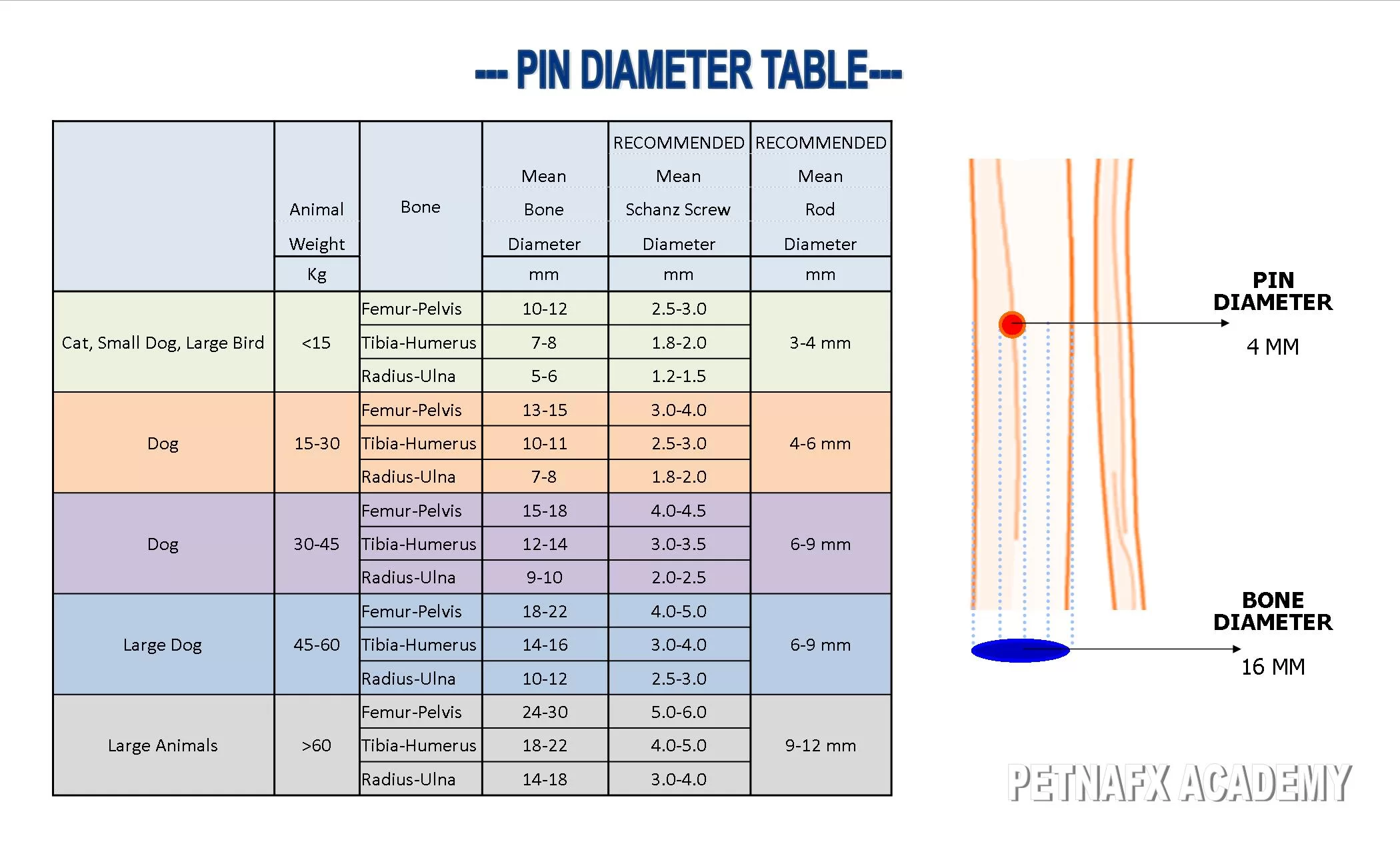
Schanz Pins that are placed too close together are biomechanically ineffective. There should be a minimum distance of 10 mm between two pins.
Pins should not be positioned too close to the fracture line. A minimum distance of 10 mm from the fracture line is recommended.
Schanz Pins should also not be placed too close to the joint line. They should be kept outside the joint capsule, with at least 10 mm distance from the joint line.
(Note: The 10 mm distance mentioned here is an average value. This distance should increase as the bone gets thicker and may decrease as the bone gets thinner.)
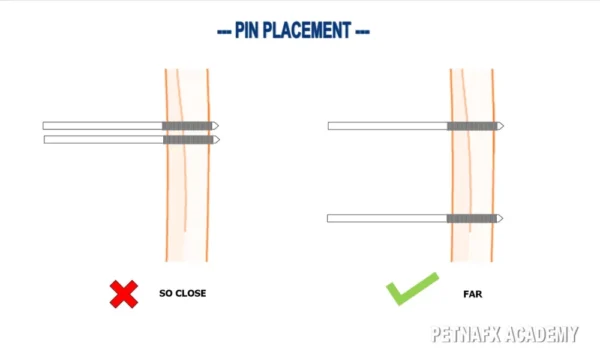
In the application Schanz Pins of the external fixator surgical technique;
is the first step is to reduce the fracture line and correct the extremity orientation. This is typically achieved by pulling or suspending the extremity. If the fracture line is open, reduction is performed and maintained using appropriate surgical instruments.
It is essential to verify and confirm in both the Anteroposterior (AP) and Lateral (Lat) planes that the fracture line is reduced and the orientation is correct. An X-ray or scopy device is required for this step.
The type and framework of the fixator to be used should be decided in advance. And planning should be done accordingly.
In the initial row, the most proximal and most distal pins should be placed and fixed first. Stability is then ensured by inserting the pins in between.
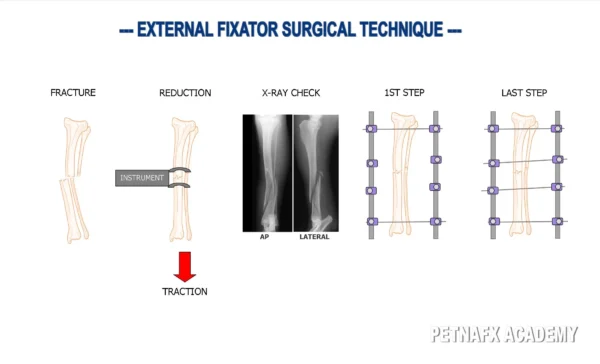
If the threaded pins are sharp, they can be applied directly. If the tip is blunt, the bone must first be drilled with a drill bit. In this case the drill bit diameter should be approximately 30% smaller than the pin diameter.
For both types of threaded pins, a skin incision should be made first. And the pin should be inserted using a suitable surgical tool to prevent skin damage.
Otherwise there is a high risk of the Schanz screw threads damaging the skin and surrounding soft tissues.
Schanz pins should preferably be inserted with a hand drill.
If motor tools are used;
they must operate at low speed to avoid heat necrosis caused by bone heating. It is strongly recommended that to place the second cortex slowly with the handpiece, even when using motorized tools. Straight wires can be placed directly through the skin without making any incisions. There is no harm in using motorized devices for flat wires. Provided they operate at low speed.
As the carrier rods of the fixator move away from the skin, their stability decreases. If they are too close, they can damage the skin. A distance of 1-2 fingers between the rods and the skin is ideal. The stability increases with the length of the carrier rod. But it should not exceed the bone length. Stability also increases with the thickness of the carrier rod. A rod with a diameter suitable for the bone and extremity size should be used.
